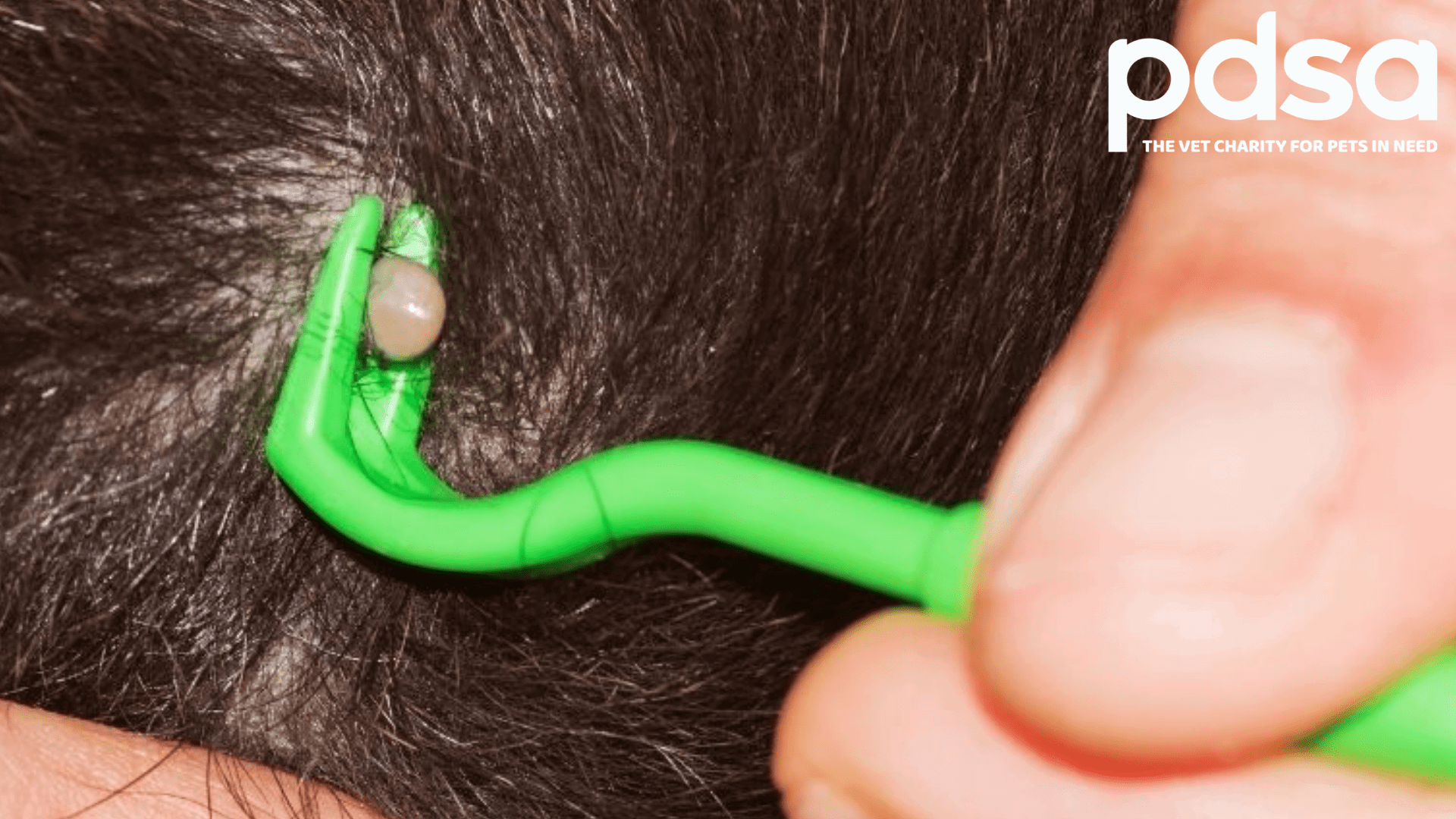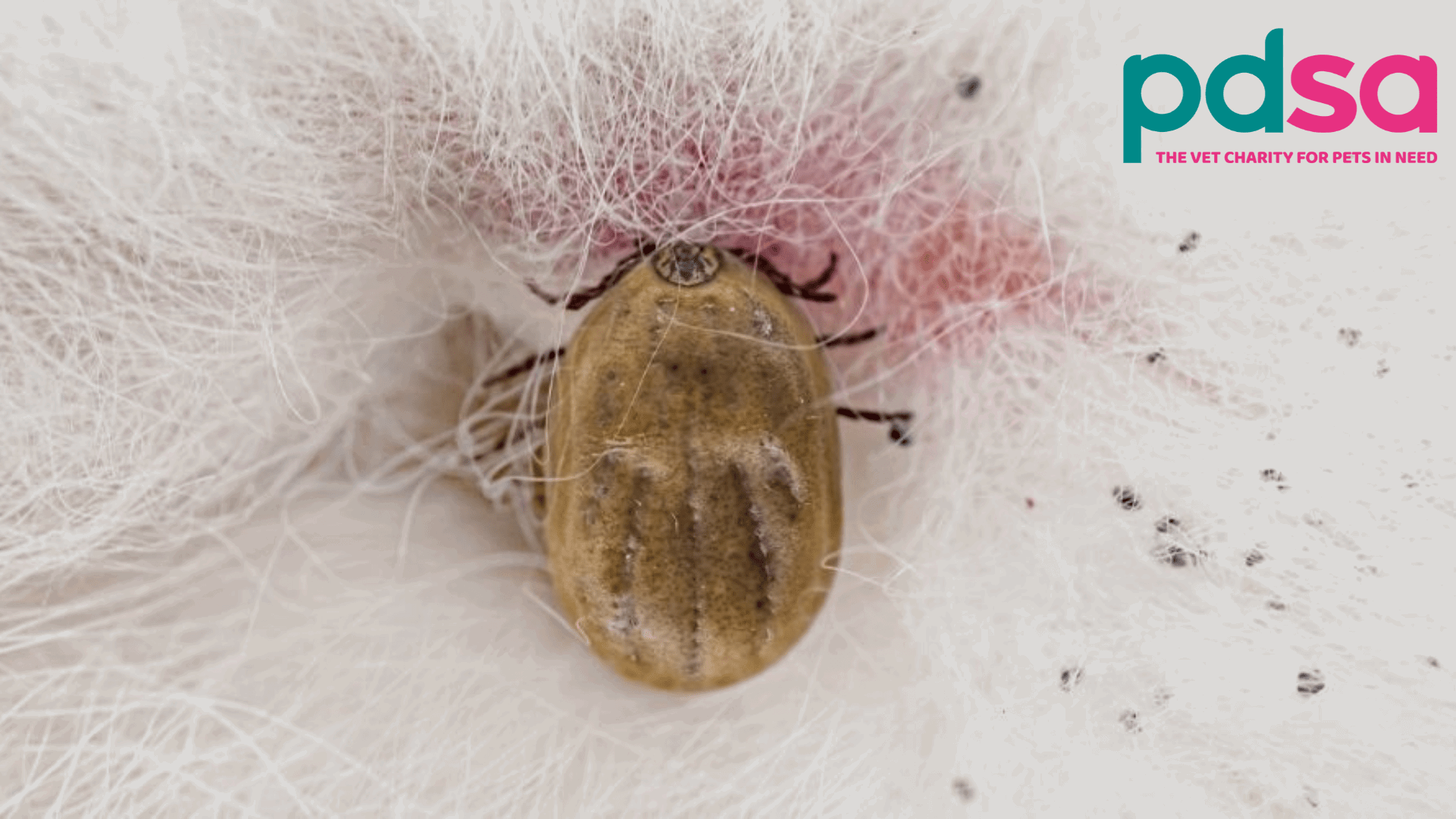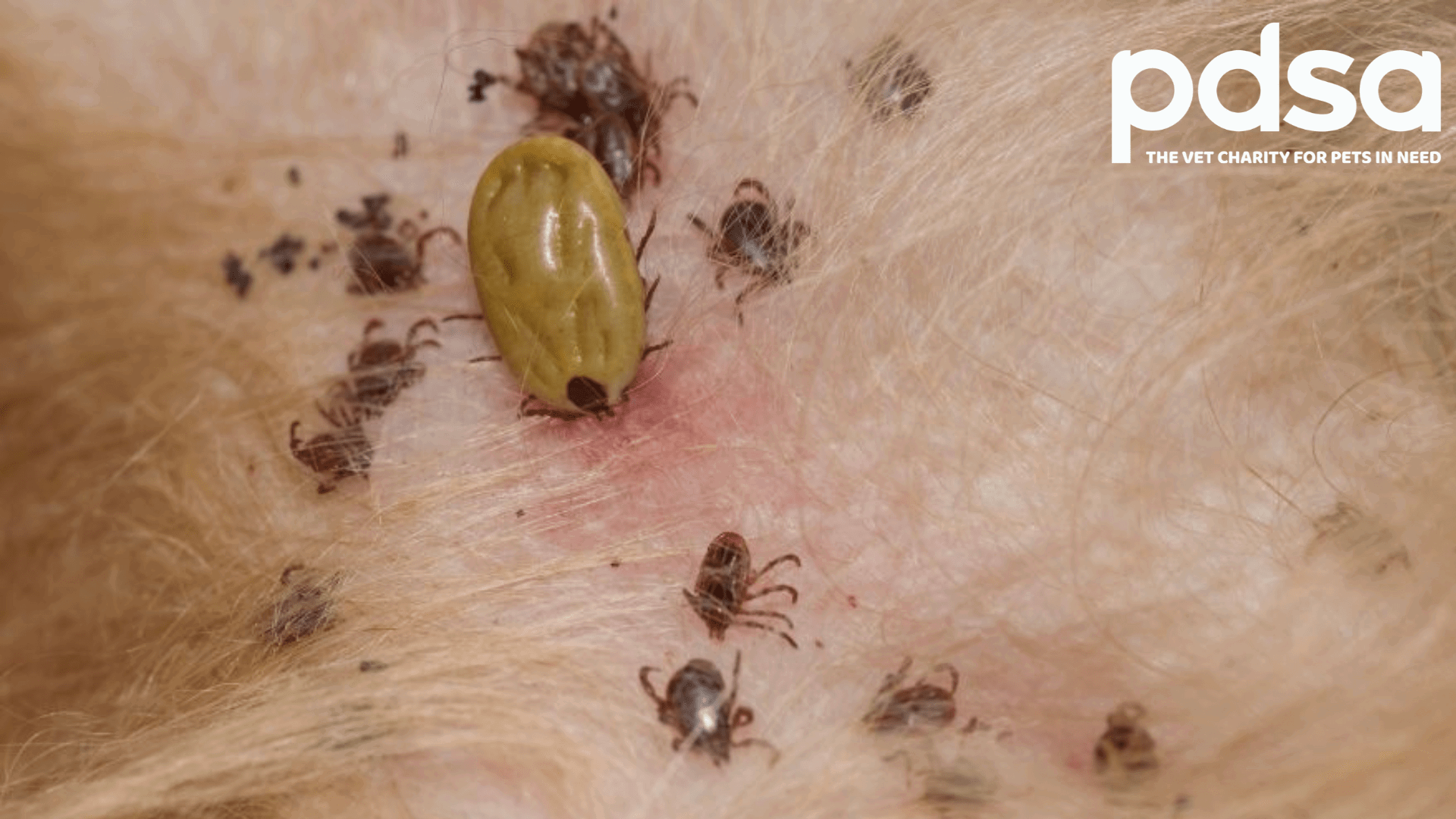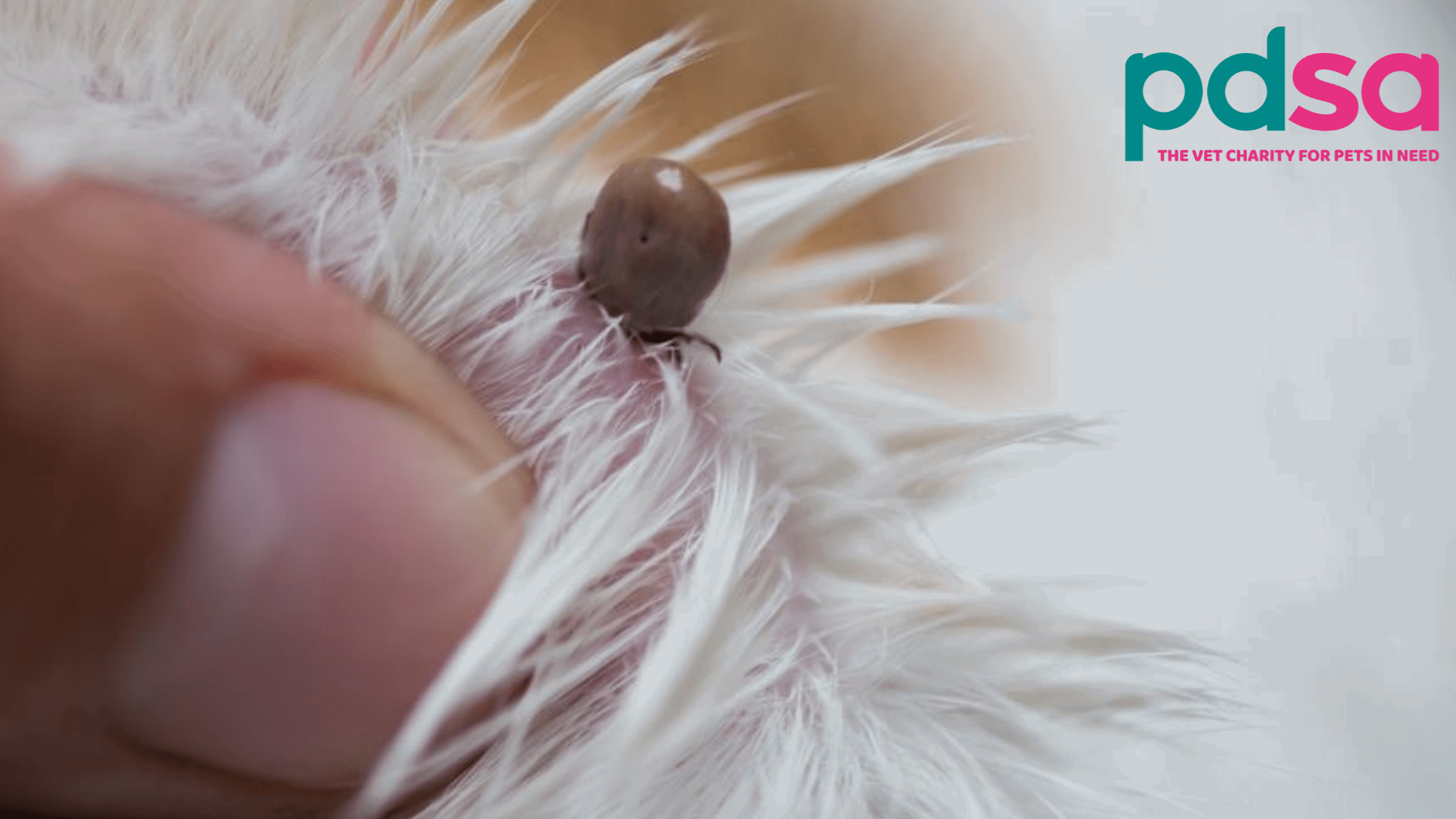Ticks on dogs
Overview
- Ticks are parasites that feed on animal and human blood. They can also transmit diseases such as Lyme disease.
- They are most active in warmer months and are commonly found in long grass, woodlands, and areas with lots of wildlife.
- If you find a tick on your dog, it’s important to remove it quickly and correctly.
- If you live in a high risk area, or your dog is prone to getting ticks, it’s sensible to use a tick-repellent during the summer months.
- Round
- Shiny
- Tiny head
- Large, slightly flattened body
- Brown, pink, purple or a bluish grey
When a tick first attaches to your dog it’s likely to be roughly the size of a pinhead, but it will grow to the size of a small pea as it feeds. At first you might mistake a tick for a skin tag or a lump, but if you look closely, you will see it has eight legs just behind its head. Ticks are tricky to spot until they get quite big, which is why it’s important to check your dog regularly, especially after walks in long grass.
 Video found at youtu.be/sGDN5IAyngA
Video found at youtu.be/sGDN5IAyngA
Tick prevention for dogs
There’s no way to completely stop your dog from getting ticks, but there are a few things you can do to reduce the risk:
- Avoid places known for them
- In the warmer months, avoid long grass. Stick to paths and open spaces instead.
- Use the tick risk map to check how common ticks are in any new areas you visit.
- Check your dog regularly
- If you regularly check your dog for ticks after walks, you may find them before they have had the chance to attach. They are most common on the head, ears, armpits, groin and tummy.
- Regular parasite control
- If you use a regular parasite treatment that covers for ticks, any ticks that attaches to your dog should die, and drop off within 24-48 hours.
- However, it’s still sensible to remove any ticks you see to reduce the chance of any diseases being passed to your dog.
- Use repellents
- If you live in a high-risk area, or your dog is prone to picking up ticks, you may want to consider using a tick repellent collar during the summer months, to prevent any from attaching in the first place.
- Tick repellents often also provide protection against other parasites such as fleas so it’s best to speak to your vet to find the right treatment for you and your dog.
When to contact your vet
There is no need to contact your vet if you have successfully removed a tick from your dog and are confident that none was left behind. However, if you’re concerned some of the tick is left in your dog, you notice redness, swelling, or signs of infection, contact your vet for advice. It’s also important to contact your vet for advice if your dog seems unwell after having a tick.
Find out whether you are eligible for free or low-cost PDSA veterinary treatment by visiting www.pdsa.org.uk/eligibility
Lyme disease
Some ticks in the UK carry and transmit Lyme disease (Borreliosis), so it’s best to speak to your vet if you think your dog has become unwell after having one removed. Ticks can also carry other diseases that didn’t used to be present in the UK, but are emerging because of the increasing numbers of pets travelling and being imported from other countries.
Can humans get ticks?
Yes – ticks can’t survive for long on humans, but they can still attach and feed from us. As well as causing irritation and infection, ticks can transmit diseases such as Lyme disease (Borreliosis) to humans. Although Lyme disease is rare, if you find a tick on yourself and you have concerns, it is best to contact your local health care services or the NHS for advice.
Published: July 2022
Did you find this page useful?
Tell us more
Please note, our vets and nurses are unable to respond to questions via this form. If you are concerned about your pet’s health, please contact your vet directly.
Thank you for your feedback
Want to hear more about PDSA and get pet care tips from our vet experts?
Sign up to our e-newsletter
Written by vets and vet nurses. This advice is for UK pets only. Illustrations by Samantha Elmhurst.





